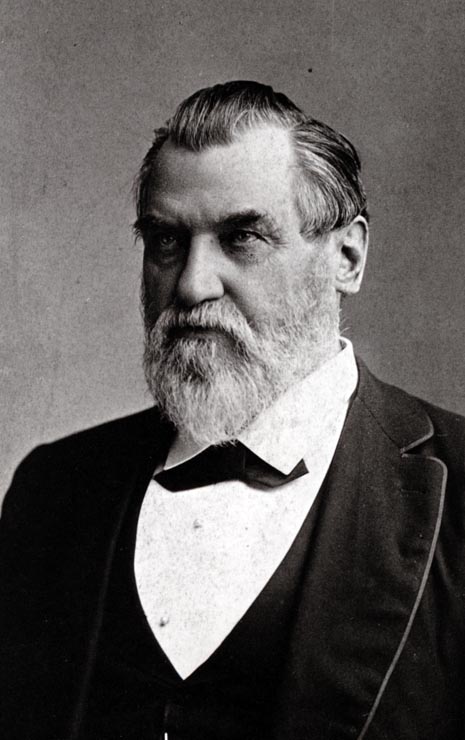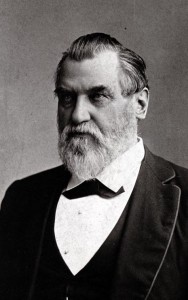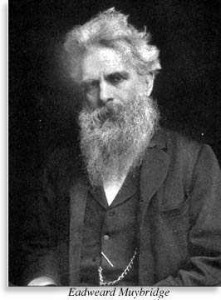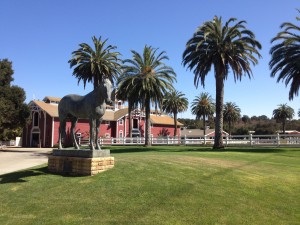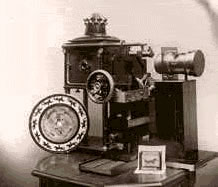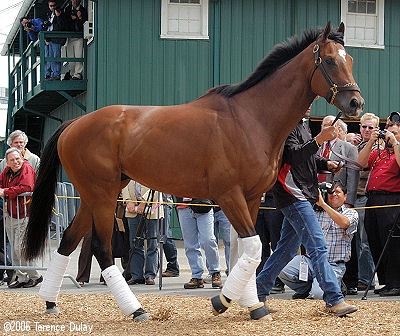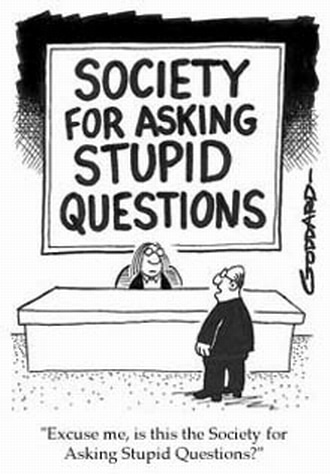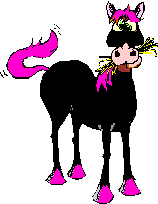A while back, I had an opportunity to acquire and old book that I thought was really cool. It’s called, “The Horse in Motion.” It was published back in 1882.
The book was published thanks to the largess of Leland Stanford, an ultra-rich 19th century mover and shaker who made his fortune in the railroad business and who also founded Stanford University. Mr. Stanford is not what this article is about. But you can read about him if you CLICK HERE.
Mr. Stanford loved trotting horses. If you haven’t seen trotting horses, they are big horses that pull a cart called a “sulky,” or, to use track terminology, a “bike,” and they race at a very fast trot (there are also pacers, but back in Stanford’s day, they didn’t like pacers). Mr. Stanford, being a competitive sort – as one might expect from a multimillionaire 19th century industrialist – wanted the best horses. And he wanted to know all about horses. And, among other things, he wanted to answer some question that people had wondered about for a long time. He wanted to know if horses pulled with their front feet or pushed with their back feet. And he wanted to know something else that people had wondered about for some time. He wanted to answer the question, “When horses trot, are all four feet ever off the ground at the same time?”
If somebody asked you such a question today, you’d probably just whip out your iPhone, or your video camera, and you’d take a video of a horse trotting by. You’d slow it down, and you’d have your answer.* But it wasn’t that easy back in Stanford’s day. No iPhones – heck, no telephones. And certainly nothing approaching the technology that would have made it easy to answer the question.
So, Mr. Stanford, being very curious, and also being very rich, decided to get his questions answered.** And to get them answered, he turned to one Eadweard J. Muybridge,*** a famous English photographer who pioneered photographic work on bodies in motion. CLICK HERE to read all about Mr. Muybridge.
Stanford had an idea that horses did get all four feet off of the ground when they trotted, based on his investigations of whether horses pulled themselves along with their front feet or pushed themselves with their hind feet (turns out, they do a bit of both). Most experts thought Stanford was wrong about thinking that all four feet were ever in the air at the same time. So Stanford asked Muybridge to find out.
You’d think that all Muybridge would have had to do was just take some pictures, and get one at the right time. But you have to remember that photography was still pretty new back in 1872, the year that Stanford hired Muybridge. When Muybridge did try to snap some shots, using the bulky, cumbersome cameras of the day, and see if he could get a nice picture of a horse frozen mid-stride, all he got was a blur. Over the next several years, Muybridge played with chemicals to develop his photos, and got shutter speeds down to 1/1000th of a second, which might have captured the horse at the right moment: but it was hard to get the right moment just by clicking the camera and hoping for the best.
So, back to Stanford University. It’s an amazing place – one of the best universities in the world. It’s pretty much its own city – it has it’s own gas station, for example. But one of the most wonderful and amazing places on the campus is the Red Barn. It’s at the back of the campus, surround by the Stanford golf course (I told you this is a nice place). I found it on a history app on my iPhone (they have apps for everything, it seems).
The Red Barn is all that’s left of the world famous Palo Alto Stock Farm, where between 1876 and 1903, Leland Stanford oversaw the scientific breeding and training of racing horses. It was built in 1878 or 1879, and it was a marvel.
The Red Barn’s most famous resident was “Electioneer.” In 1887, over the objections of his advisers, Stanford, who was governor of California by then, bought the stallion for $12,000. Over the next 14 years, “Electioneer” became one of the most successful and influential racing stallions in history – he sired 166 colts that could trot a mile in less than 2 1/2 minutes (a very fast time back then – breeding and technology have the current world record down around 1 minute 50 seconds). Still, when I say influential, I mean influential. All current pacing record holders descend paternally from Electioneer. All trotting record holders descend from two of his granddaughters, Princess Royal and Cita Frisco. If you want to learn a bit more about harness racing, CLICK HERE.
The Red Barn was restored to its former glory in 1984, and it reopened in 2005. The facility is currently used to house the horses of the Stanford Equestrian Team. The stalls are spacious, and well-ventilated. I could live in them. But back to our story.
 It was at Stanford’s stock farm that Muybridge went to try to answer Stanford’s question about whether horses ever got all four feet off the ground at the same time. It soon became apparent that the question just wasn’t going to get answered with one, well-timed, shot, so Muybridge came up with the idea of using multiple cameras. First, he set a bunch of cameras up around the track at the stock farm (which is no longer in existence). The cameras were attached to strings, which were to set off the cameras, in sequence.
It was at Stanford’s stock farm that Muybridge went to try to answer Stanford’s question about whether horses ever got all four feet off the ground at the same time. It soon became apparent that the question just wasn’t going to get answered with one, well-timed, shot, so Muybridge came up with the idea of using multiple cameras. First, he set a bunch of cameras up around the track at the stock farm (which is no longer in existence). The cameras were attached to strings, which were to set off the cameras, in sequence.
ASIDE: This part of the story makes me wonder who was overseeing the project. I’m not sure who thought that putting a bunch of strings in the path of a running horse was a good idea.
The string idea didn’t work. The horses hated them, and the impact of the horse hitting the strings was jarring for the cameras. But this project was for Leland Stanford, and money was not an issue. So, over time, railroad engineers solved the problem (it was nice to have such guys around to help, apparently). They developed a system where the wheels of the sulky triggered the cameras, and put in a rubber path to smooth out the horses’ strides. Thus equipped, in 1878, Muybridge called in a group of reporters, ran the horse (whose name was “Occident”), took a few minutes to develop the plates, and demonstrated, without question, that horses do have all four feet off of the ground when they trot.
It didn’t stop there, however. In just a year, Muybridge came up with a new idea, his “zoopraxiscope.” He devised a glass disc, and mounted individual images around the rim. In the middle of the disc, he inserted a shaft. He used a lantern device to project the individual images, and, voilà, the first animated motion picture, shown in the Stanford family home in 1879. It’s really cool – you can see it, below.
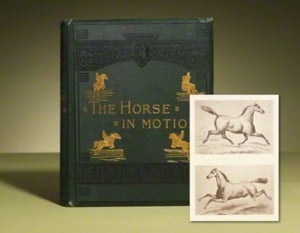 Finally, in 1882, Muybridge published his book, “The Horse in Motion. It’s a unique bit of history for horse lovers, and it’s been reprinted many times – you can find the pictures on the web, or buy the book on-line (including the original). And thanks to a phone app, and my own curiosity and love of history, I got to learn all about it.
Finally, in 1882, Muybridge published his book, “The Horse in Motion. It’s a unique bit of history for horse lovers, and it’s been reprinted many times – you can find the pictures on the web, or buy the book on-line (including the original). And thanks to a phone app, and my own curiosity and love of history, I got to learn all about it.
Horses are so much fun.
***********************************************************************************************************
* The answer, if you didn’t know, is “Yes.”
** Some people have asserted that he decided to get the question answered to settle a bet. Historians don’t think that’s true, however.
*** It is my impression that one doesn’t meet as many “Eadweards” as one may have in the past.

